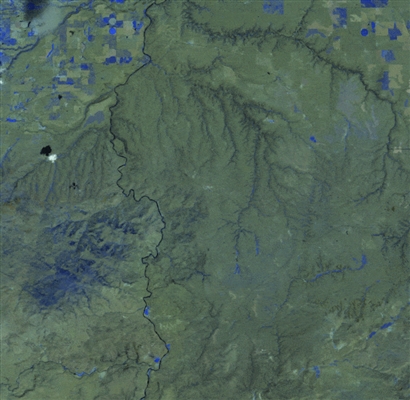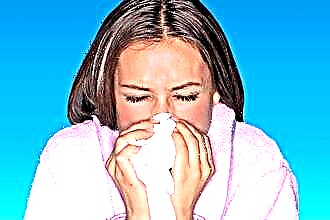Tonsillitis in most cases develops against the background of a bacterial infection, but a viral origin of inflammation of the tonsils is not excluded. Of the factors provoking the inflammatory process, it is worth highlighting the inhalation of cold air, dust, hypothermia, the influence of drafts, the use of cold drinks. The most effective in this case are inhalations for tonsillitis.
 A combination of therapeutic methods, such as gargling, dissolving lozenges, inhalation, can stop the development of inflammation, reduce tissue swelling, and prevent the development of complications.
A combination of therapeutic methods, such as gargling, dissolving lozenges, inhalation, can stop the development of inflammation, reduce tissue swelling, and prevent the development of complications.
Without therapy, the inflammatory process undergoes chronicity. As a result, chronic tonsillitis develops, which manifests itself in periodic exacerbations. Inhalations provide assistance in the acute period of the disease, with an exacerbation of the chronic form, and are also used for prophylactic purposes in order to avoid the onset of symptoms of the disease.
Tonsillitis is characterized by the following features:
- Soreness when swallowing, talking.
- Subfebrile hyperthermia.
- Hoarseness of the voice due to the spread of inflammation to the vocal cords.
- Malaise.
- Sore throat.
A complication of the disease can be tracheitis, bronchitis, and if the inflammatory process of the lung tissue is affected, pneumonia.
With the development of purulent inflammation (lacunar, follicular tonsillitis, abscess), the use of inhalations is prohibited.
How to use a nebulizer
Today, nebulizers are widely used in otolaryngology and pulmonology. A nebulizer is a small device that converts medicine into small particles. Due to their small size, they are able to penetrate deeply into inflamed tissues, providing maximum therapeutic effect.
The device is used in a stationary, home environment, without requiring special care. In addition, there are significantly fewer adverse reactions after inhalation than with intravenous, oral administration of drugs.
The combination of a compressor, a medicine cup, and a tube is a nebulizer. The comminuted drug occurs by passing it through tubes under pressure. If ultrasound is used instead of a compressor, the crushing process is silent.
Nebulizer therapy can be carried out with antibacterial, anti-inflammatory drugs. Before starting the procedure, you should wash your hands, assemble the device according to the instructions, and place it on the table. A dirty air filter requires rinsing with cold water, then air-drying.
The device is connected to an outlet. Now you need to prepare a medicine. Some drugs are sold ready-made for use with a nebulizer. In this case, the contents of the nebula must be squeezed into a glass. If the drug must be prepared in advance, then saline is used for dilution.
For one session, 3-4 ml of the medicine is often enough. After that, you need to connect the glass to the tube, mask. If the treatment is carried out by an adult, then the patient should clasp the mouthpiece with his lips. When it comes to a child, the mask is tightly applied to the face.
After turning on the device, the glass should be held exclusively upright. The duration of the procedure is approximately 7-10 minutes. The end of inhalation is indicated by the absence of comprehended vapor.
The nebulizer can be used by newborns (in consultation with the neonatologist) without requiring synchronization of breathing with the device.
If the rules for caring for the device are not followed, the nebulizer becomes a source of infection, the development of pneumonia of bacterial, fungal origin. To avoid this, it is necessary to wash the glass,  mask, mouthpiece with boiled water, dry thoroughly. When using disinfectants, it is imperative to rinse with boiled water.
mask, mouthpiece with boiled water, dry thoroughly. When using disinfectants, it is imperative to rinse with boiled water.
When a child is being treated, the tightness of the mask should be monitored. If the child cries, moves his head abruptly, small particles of the medicinal substance cannot penetrate deeply, which reduces the effectiveness of the procedure. To avoid this, parents are advised to purchase the device in the form of a toy, and the procedure itself should be carried out in the form of a game.
You should not keep the mask near your nose or mouth - this will not provide a therapeutic effect. The child should be calm, and breathing should be even, slow.
Things to remember when inhaling
When inhaling with a nebulizer, you should take into account:
- Inhalation in children with the use of drugs that have a pungent odor increases the risk of developing bronchospasm, the appearance of severe shortness of breath. This is due to anatomical features.
- Before starting the procedure, you should make sure that there is no allergic reaction to this drug.
- Do not use oil solutions with a nebulizer. Fatty particles penetrate into the small bronchi, obstruct their lumen, and lead to a violation of the drainage function. Gas exchange in the blocked areas does not occur, which causes respiratory failure.
Nebulizer benefits
Tonsillitis therapy is more effective when using inhalation. Why is it best to use a nebulizer?
- The temperature of the drug supplied to the respiratory tract is controlled, which prevents burns of the mucous membrane.
- Continuous flow of medication into the upper respiratory tract.
- The procedure can be carried out in a supine position.
- Does not require deep breathing, especially if the treatment is for children.
- The size of the particles of the drug substance make it possible to penetrate deeply into the organs of the respiratory system.
The nebulizer is very useful for children, pregnant women, since the range of medications they use is strictly limited.
Inhalation rules
To achieve the maximum therapeutic effect, it is recommended to adhere to the following rules:
- The procedure is carried out one hour after a meal, since stimulation of a cough with sputum discharge can provoke vomiting.
- After inhalation, you should not go out into the cold, smoke, eat for an hour.
- Inhale should be slow, deep, holding the breath at the end. After that, you should exhale passively, slowly.
- Inhalation is prohibited for febrile fever.
Nebulizer preparations
Treatment of tonsillitis can be carried out with ready-made drugs or drugs that must be previously diluted with saline.
- Rotokan, as an anti-inflammatory agent, is used in a diluted form (with saline) in a ratio of 1:40. Thanks to calendula, chamomile, yarrow, the severity of inflammation decreases, tissue swelling decreases. For one session, 4 ml of solution is enough.
- Propolis tincture is diluted as 1:20. For the procedure, 3 ml is used. The medicine is contraindicated in the presence of an allergic reaction to beekeeping products in order to avoid the development of severe bronchospasm.
- An alcoholic tincture of eucalyptus requires a dilution of 10 drops per 180 ml of saline. For a session you need 4 ml. The medicine is not permitted for bronchial asthma.
- Malavit is divorced with saline as 1:30.
 3 ml is enough for a session.
3 ml is enough for a session. - Tonsilgon N consists of oak bark, chamomile, walnut leaves, yarrow, horsetail. The combination of medicines helps to relieve inflammation, edema, and has an antiseptic effect.For adults, the medicine is diluted twice, the child is treated at a 1: 2 dilution.
- Calendula extract is used for tonsillitis at a 1:40 dilution, using an alcoholic infusion of the drug, physiological solution.
- Furacilin has a pronounced antiseptic effect. When buying a ready-made solution, no dilution is required. You can also crush a furacilin tablet, completely dilute in 120 ml of saline. During the session, 4 ml are consumed.
- Dioxidine has a broad spectrum of antimicrobial activity. Before inhalation, dilute 1: 4 with saline if 1% is used.
- Chlorophyllipt 1% is especially often prescribed for tonsillitis, since the drug affects staphylococci. For inhalation, a dilution of 1:10 is required. In one session, 3 ml of the diluted product is consumed.
- In consultation with the doctor, gentamicin 4% can be used. The drug is diluted with saline solution 1: 6 (for adults), from 2 to 12 years old - 1:12. For 1 session, 3 ml of a diluted antibacterial agent is used.
- Miramistin 0.01% has a wide antimicrobial spectrum. For adults, the medicine is used in undiluted form, 4 ml is enough. For a child, the drug must be diluted in half, use 3 ml for one procedure.
Inhalations are carried out three times a day, but if necessary, you can increase the amount to 4-6. The use of a nebulizer for tonsillitis is justified in catarrhal form, when a person is worried about a sore throat, and the temperature does not exceed 37.5 degrees. With increased pain, the appearance of febrile fever, inhalation treatment should be discontinued. In this case, you need to see a doctor for a complete examination, to determine the treatment tactics.

 3 ml is enough for a session.
3 ml is enough for a session.

